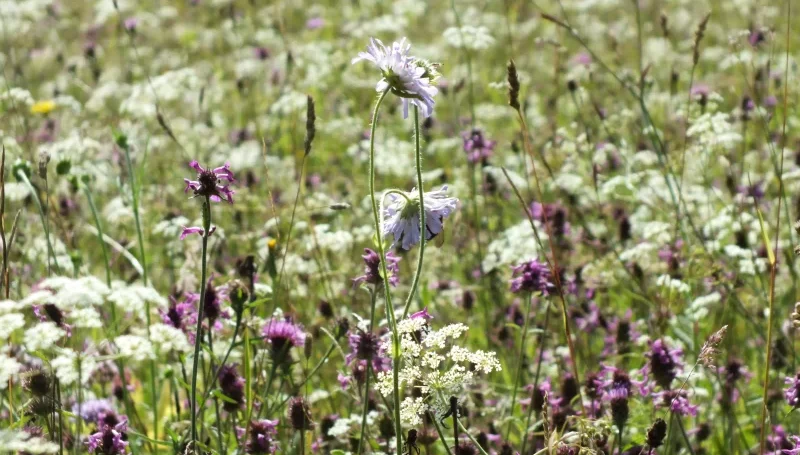You should be aware of the mandatory requirement for 10% Biodiversity Net Gain on new developments that came into effect 12th February 2024. Most new developments will have to demonstrate how they will achieve a minimum of 10% Biodiversity Net Gain (often referred to as BNG) and the 10% will be calculated using the government’s biodiversity metric.
Becoming familiar with the ideas of natural capital and Environmental Net Gain along with BNG will help you to position your projects to best cope with future stresses. Just as BNG has settled into our vocabulary and various tools for calculating BNG have been standardised in the biodiversity metric, we can expect a similar trajectory for Environmental Net Gain.
What is Environmental Net Gain?
The term ‘Environmental Net Gain’ is increasingly appearing in conversations with environmental, sustainability and energy professionals. Our government is already looking beyond BNG to examine ways of measuring gains outside of just biodiversity, to assess the wider implications of new developments.
Environmental Net Gain (ENG) is an approach that ensures that most developments will make a measurable contribution to the natural environment and the services that our natural environment provides to society. There is currently no widely agreed-upon methodology for measuring Environmental Net Gain of new developments, but in England, the 25-Year Environment Plan committed the Government to exploring the potential for a wider Environmental Net Gain. It has been stated in the 25-Year Plan: “In future, we want to expand the net gain approaches used for biodiversity to include wider natural capital benefits, such as flood protection, recreation and improved water and air quality.
We know that the value of our natural environment is routinely understated. For example, the Office for National Statistics estimate that England’s woods and forests deliver a value of services estimated at £2.3 billion annually. It is estimated that only 10% of this figure is in timber values and the rest comes from other less visible benefits to society like recreation or the reduction of air pollution, or carbon sequestration which can help combat climate change.
The NIC gives examples of benefits of an ENG approach. The effects of climate change and risks posed by extreme weather, like flooding, can be mitigated. It can facilitate improvements in air and water quality, ultimately bringing improvements to human health. But it also allows the efficient delivery of client benefits, for example both achieving an infrastructure goal and increasing resilience. You may also save time and money by avoiding costly and lengthy appeals processes due to environmental concerns.
What is Natural Capital? What is a Natural Capital Asset?
Understanding and measuring natural capital will be part of an ENG approach.
There are various definitions of natural capital, but at its core it refers to the various environment, social and economic benefits provided to humans by the natural environment.
Soil, rivers, and woodland are examples of features of our environment that provide ecosystem services. These services can include insect pollination and soil formation for food sources, carbon sequestration and even recreation and benefits to our physical and mental well-being.
Classifying these as “natural capital assets” allows us to then quantify the impact of development and operational activities on the natural environment, so we can then measure Environmental Net Gain.
While the idea of natural capital focuses on its benefits to humans, Environmental Net Gain looks at this and the wider benefits to the environment – for example, how the installation of solar panels can reduce the amount of fossil fuels used and emissions to the environment, or how woodland can store carbon. Moving away from natural capital to Environmental Net Gain, there is more of a focus on non-ecological concerns.
What is a Natural Capital Assessment?
A Natural Capital Assessment is a three-stage assessment that considers the following:
- What is the asset and what condition is it in?
- What ecosystem service does it supply?
- What is it worth?
This three-stage assessment could be conducted at one of two stages. It can be a comparison of alternative options for site design at the pre-application, master planning, feasibility or early or detailed design stages or it can be an assessment of the impact of a change in land (e.g. changes to habitat type or condition) at any stage of a project lifecycle.
What is a Natural Capital Baseline?
Examining the asset, a natural capital baseline will identify the assets that are already present and their size, location and condition to inform your assessment. For example, your asset could be:
- woodland
- semi-natural grassland
- farmland
- mountain
- freshwater and wetland
- coastal and marine
- green infrastructure
Tools for assessing the value of a Natural Capital Asset
CIEEM have provided a document to signpost the most up-to-date information around natural capital and Environmental Net Gain.
This will include the tools to assign a value to an asset, a link to where you can find the tool, where it applies, who has authored the guidance, a summary of the tool and any relevant notes or comments.
Limitations of Natural Capital Assessments
At present, as there are several different tools available to assign a value to a natural capital asset, a lack of standardisation means that you may not be able to draw a comparison across projects. Hopefully, we will see a standardised set of calculations to determine natural capital values in the near future.
For more information on Natural Capital Assessments or assistance achieving Biodiversity Net Gain, do not hesitate to get in contact.




